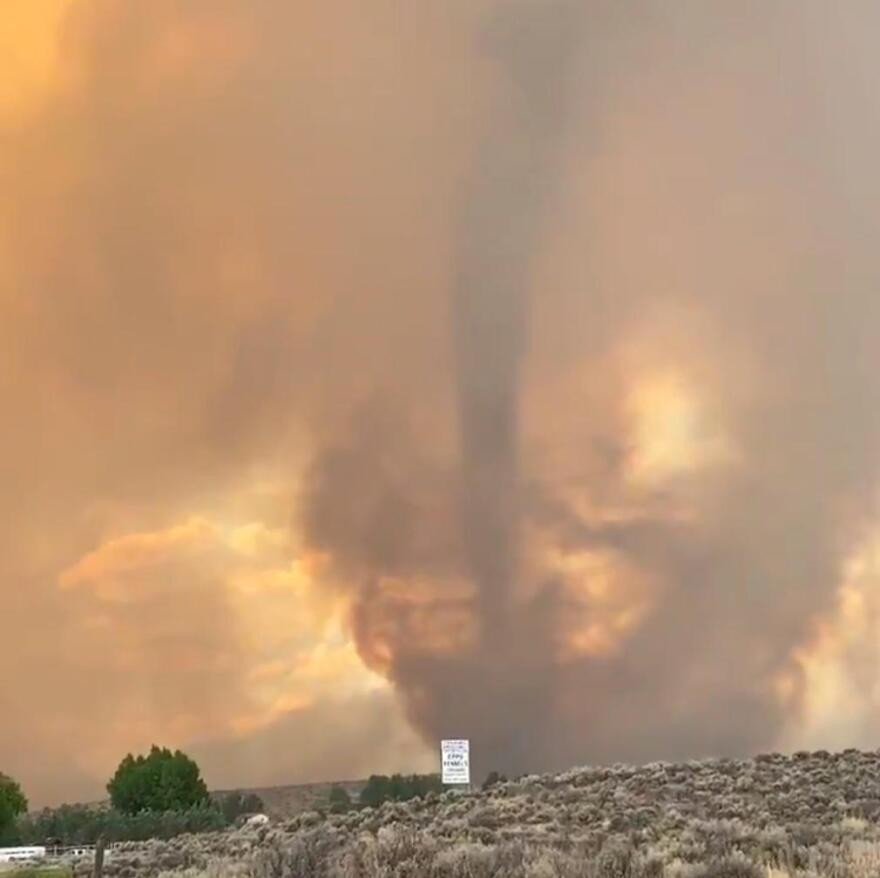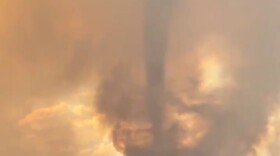Last year, wildfires destroyed hundreds of thousands of acres, displaced hundreds of people and caused millions of dollars’ worth of damage. So, what can we expect this year?
Chris Smallcomb is a meteorologist with the National Weather Service in Reno, and he spoke with KUNR Morning Edition host Noah Glick to give an outlook for this year's fire season.
Chris Smallcomb: Last year was a pretty crazy year. I mean, the fact that we issued the first-ever Fire Tornado Warning for the Loyalton Fire just northwest of Reno, I think that kind of says something about the year.
Noah Glick: Speaking of last year, 2020 was a historic year, at least in the state of California, in terms of just how many wildfires there were and how much destruction they caused. Nevada avoided some of that last year, but we still had our fair share of wildfires. So, what is the outlook this year? Are we in for another historically bad year?
Smallcomb: I think the area to worry about this year is going to be the mountain areas. ... The timber is pretty dry still. We're still having effects from that big drought back in 2014-15. Even though we've had some fairly wet winters in between, a lot of the vegetation is still pretty stressed. So, now that we've had two dry winters in a row, the mountain areas are where we're most concerned about for above-average fire activity this year. And so, people that live in Tahoe, Truckee and Mammoth, this would be a year to review your plans, be prepared and take a look at the clearance around your property and things like that.
Now more into Nevada, where fires tend to rely more on the grassy vegetation, there's not as much of that this year because of the drought. So that potentially could limit how extensive the fires get, at least out here closer to Reno, Carson City and Western Nevada.
Glick: That's interesting. In some ways, a drought might actually help Nevada.
Smallcomb: That's what the historical data shows, that when we're in our most significant droughts, fire activity does tend to be kind of average to below average for those years in Nevada. Now, there is one little caveat for our friends up in far Northern Nevada. So, Winnemucca and Elko, there was actually more precipitation in those areas this year, so there could be more of a grass crop. Therefore, fire activity may actually be average or maybe slightly above average.

Glick: You hear a lot about climate change when it comes to wildfires and how it's impacting and extending the season of wildfires. So, what is happening weather-wise that is making the conditions ripe for wildfires across our region? You mentioned some of the grasses, some of the dry timber. Are you seeing any conditions that might help wildfires spark and spread this year?
Smallcomb: Climate change isn't my area of expertise; I'm a day-to-day weather forecaster. But, one thing that we have seen, even as meteorologists, is the autumn season. That's the season that's really become the big fire producer for California and Nevada because it seems like recently — and there's some research that actually backs this up that just came out — that those first “wetting” storms are actually coming in later than they used to. Such that September, October, even into November can often be dry. And that's also when we start getting our strong wind events, and those help drive those really big fires.
Glick: We've talked about a lot of the potential dangers here, but are there any silver linings we can take from this? Is there anything we can look at this year or trends you might be seeing that can alert us that it might all be ok this year? Are there positive signs on the horizon at all?
Smallcomb: Well, I'm not seeing anything really big. And I'm not trying to be too negative, but everything is indicating that we're trending toward another fairly warmer, warmer than normal summer. The one thing is if you look at past summers, even during the middle of droughts, we've had events during the summer where we get a ton of rain, just out of nowhere in the middle of August or July. And then that ends up totally changing the course of fire season. That kind of scenario is certainly possible, so we can always hope that something like that happens, and it kind of limits how serious the fire season could be.
Chris Smallcomb is a meteorologist with the National Weather Service in Reno.




